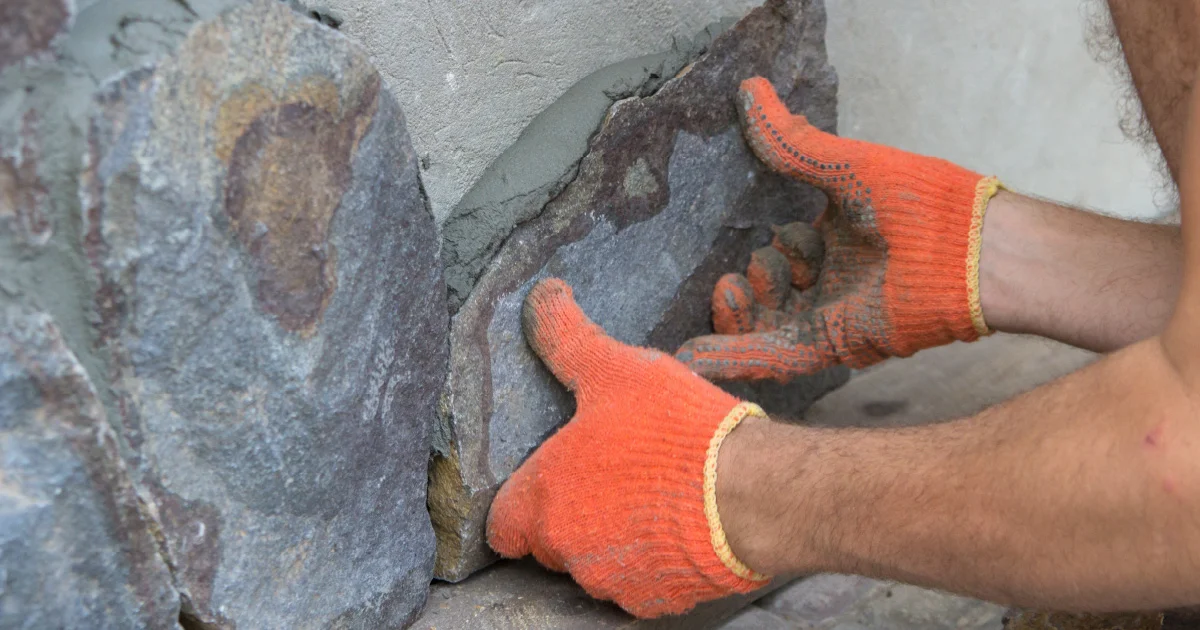Stone has been used as a building material for millennia due to its elegance and durability – like the Knap of Howar which still attracts visitors an astounding six thousand years after its construction. You probably don’t need your home or business to become a tourist destination thousands of years into the future, but you can still capture the beauty and durability of authentic stone.
If you’re planning a stone project today, one of the first decisions you’ll need to make is whether you will use thick wall stone or thin stone veneer. Both materials are naturally occurring rock and therefore offer incredible durability and natural resistance to weather damage. While these two building materials share many features, they also have key differences that can influence your decision.
Thick Wall Stone Is Much Thicker and Heavier Than Thin Stone Veneer
Thick wall stone is the type of stone most people traditionally equate with building. Also called full bed stone, it averages about 6 inches in depth. The thickness of the pieces makes thick wall stone heavy and, therefore, it is typically applied to surfaces that can bear the extreme weight of the stone.
On the other hand, thin stone veneer is a comparatively new product that is created by sawing the face from a thicker stone slab. Averaging about 2 inches in depth when properly installed, it is much lighter and more versatile than thick wall stone. Due to the low weight, thin stone veneer can be applied to most surfaces without additional support.
Thin Stone Veneer Uses Less Space Than Thick Wall Stone
Because thin stone veneer is much thinner than thick wall stone, it requires less space around the structure. The smaller footprint is beneficial for exterior applications but is especially impactful in indoor spaces.
For example, a fireplace with full bed stone on three sides would protrude six inches in each direction, which is not ideal for a residential living room. On the other hand, thin stone veneer allows you to add the same natural stone without losing valuable floor space.
Thin Stone Veneer Has a Lower Overall Cost Than Thick Wall Stone
Per square foot, thin stone veneer materials are typically more expensive than thick wall stone. However, thin stone veneer is often much less costly to ship due to its light weight. Also, thin stone veneer can be significantly less expensive to install since it does not require additional support.
When shipping and installation are factored into the total cost, thin stone veneer is typically a more cost-effective option than thick wall stone. However, the type of stone and pattern you choose have a significant impact on the overall cost of your project.
Both Thin Stone Veneer and Thick Wall Stone Are Better from the Source
Some big-box retailers sell thin stone veneer and thick wall stone. However, their options are limited, costs are high, and they often don’t offer the special cuts you need to bring your project to fruition. For this reason, you get a better quality product at a lower cost by shopping with a company that specializes in stone.
The right stone company can provide the highest quality stone for your project because their stone comes directly from local quarries and is cut in-house to rigorous quality standards. Buying directly from the manufacturer also helps avoid middlemen and third-party markups. In addition, a specialty stone company can make special cuts, answer your questions, and help you choose the right material for your project.
Get Real Rock® Thin Stone Veneer and Thick Wall Stone from Lamb Stone Company
For over 50 years, Lamb Stone has provided Real Rock® Thin Stone Veneer and thick wall stone for wholesale and retail applications. Our high-quality, authentic Southern Appalachian Stone™ is available in over 70 beautiful patterns sure to match your style.
Our experienced customer service team is happy to answer your questions and discuss your intended project. Best of all, our expert masons can install your stone to highlight its natural character.
To learn more, contact us.

